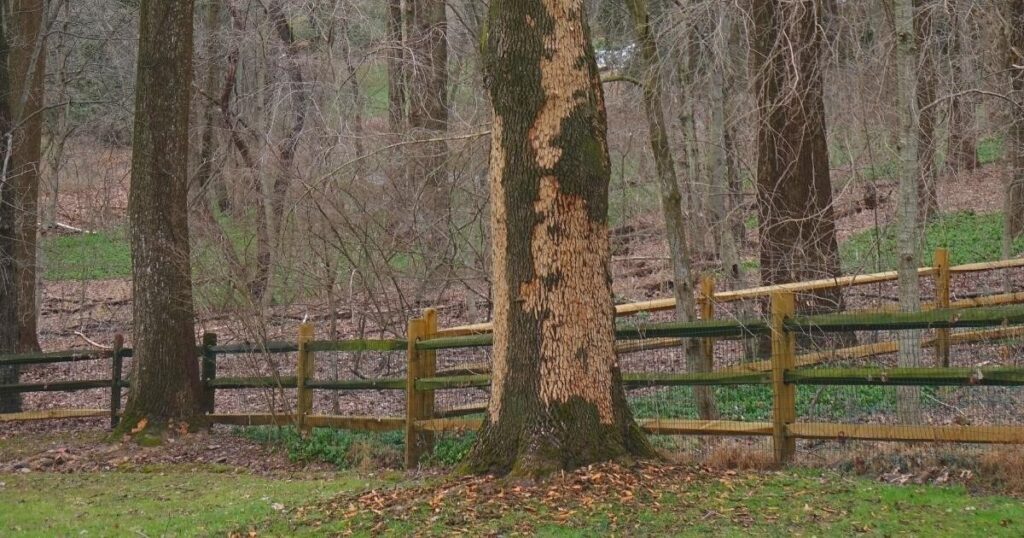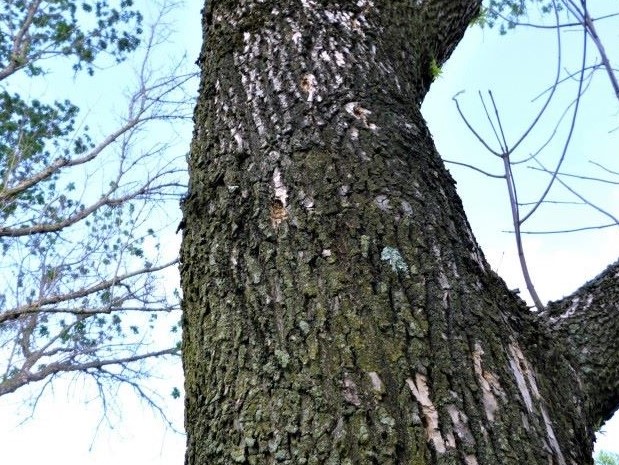Emerald Ash Borer (EAB) has been attacking ash trees throughout various areas of the state since 2014, when it was first discovered in NJ. Since then, it has spread through all counties of the state. EAB kills ash trees by damaging the vascular system. This prevents movement of water and nutrients through the tree.
While it has been here for a while, it has not always been easy to tell if a tree was infested. The signs are subtle at first – mostly just some dead limbs in the crown and a slow thinning of the overall density of the canopy. It happens slowly. For the first couple years of infestation, it may seem like nothing is amiss, and it may be difficult to definitively know. This is because the damage begins higher up in the canopy and progresses downwards as pest populations increase.
Ash trees can be saved with proper preventive treatments.
Trunk injections with labeled insecticides can prevent EAB infestation for two seasons. Treatments must begin before major damage has occurred to be successful. If you have an ash tree and you are uncertain of the condition, call us at (908) 204-9918. Our Licensed Tree Expert can provide an evaluation and recommendations.

https://www.udel.edu/academics/colleges/canr/news/2022/february/emerald-ash-borer/
A New Blonde in Town
This year is a turning point in EAB detection. Over winter, we’ve watched as trees have seemingly transformed before our eyes. A typical ash tree has distinct greyish brown bark, but over late winter into early spring, we noticed that ash trees were changing colors to a lighter blondish color. We are seeing bark missing along the entire trunks and limbs, with piles of bark flakes beneath the trees. This “blonding” is a common symptom of advanced infestation by EAB. This is due to woodpeckers removing the outer bark as they search for EAB larvae and pupae under the bark. Since the beetles infest the upper portions of the tree first, they may not be noticed early on. As the beetle population increases over several years’ time, they are found lower and lower on the tree, until the damage is unmistakable – and the tree is inevitably going to die.

Dangers in Dead and Declining Ash Trees
According to Purdue University EAB Outreach, “Ash trees killed by emerald ash borer, become extremely brittle and break easily as they decline. Branches can fall on people and property in snowstorms, with a light breeze, or even on a calm clear day. Danger could be hanging over your head in the street, in the forest, and even in your backyard.”
Ash trees have a thin ring of conducting tissue to supply water from the roots to the entire tree. EAB damages these functional water pipes as they feed just beneath the bark. This causes the tree to dry quickly and the structural wood to become prone to cracking. Internal breaks in the structural wood that bear the weight of the tree are often hidden from view by tree bark. As such, limbs can break and fall at any point along the branch at any time. It is not uncommon to have sizable limbs snap 30 feet off the ground on a calm day.
If you see heavy blonding on an ash tree, it is beyond the point of treatability. It is time to consider removal. EAB causes progressively more injury to trees as time goes by. The dead parts never come back to life. If you have an ash tree and you are uncertain of the condition, or if you are uncertain if you have ash trees on your property, call us at (908) 204-9918. Our Licensed Tree Expert can stop for an evaluation and to make recommendations.